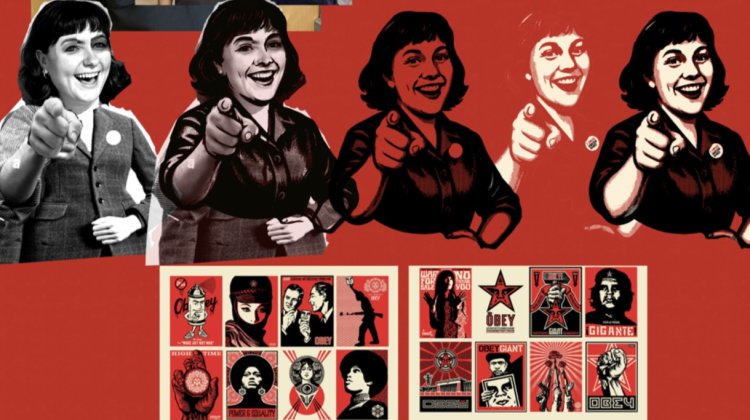
Louise Gardner Director of Audiences
on Thu 20 NovAn interesting day talking about AI...
Posted on Thu 20 Nov
This week we found out that some people are under the impression that our Cinema of the Year campaign artwork had been created with the use of AI. This has come as quite a shock to us, however we are grateful that the question has been asked so we are able to clarify our position in relation to AI and to say clearly that no AI was used in the creation of this piece of creative work.
We have spent a good part of a day responding to a query from an audience member about our BIFA Cinema of the Year design. It has been a really useful process responding to the suggestion that we have used an AI generated image, thus taking away an opportunity for a creative.
To be absolutely clear we have not used AI in any part of the design and we strongly champion Bristol artists and creatives.
We are sharing our design process for this piece of work and also some information about our approach to the use of AI – we think this will be of interest not just to our audiences but to partners, creatives and anyone else who is thinking about the impact and consequences of the rise of AI.
About our Cinema of the Year design
This design was created by Tony Stiles of Studio Stiles. Tony is an incredibly talented designer, who we have worked with for many years. Most of the branding you see in the building, on our cinema screens and online has been created by Tony.
When we discovered we were shortlisted for BIFA Cinema of the Year, we needed a design that would work in a variety of formats, quickly. Our brief was to riff off recruitment posters, from early 20th century adverts such as the Lord Kitchener Wants You and Rosie the Riveter to more modern designs like those from Shepard Fairey.
We wanted a friendly face to be the focus of the campaign and the person in the inspiration photographs we provided to Tony is actually a member of staff. Gavin is our Development Coordinator, and gamely posed in lots of positions that we then sent to Tony.
Rather than paraphrase, we asked Tony to write up his 'photography to illustration process' - which you can read about here - along with some of the design references we talked about, and the photographs of Gavin. Alongside this we you can see the image we took of Gavin next to one of our posters in the city at the top of this page.
Watershed Poster - the design process
Alongside the visuals that you an see in the link above Tony has talked us through his approach and practice...
I’ve been very fortunate to have worked with Watershed for many years and we have a trusted working partnership.
As a designer I use an Apple iMac, Adobe Creative Cloud and Topaz Labs software - all have AI technology built in. I use this technology everyday for design and imagery. I also use a Wacom drawing tablet and pen, mouse, keyboard, pens, pencils, markers, ink, cans of spraypaint, acrylics, rulers, scalpels and lots of paper. In my studio there is a letterpress printer, a cabinet of wood type, a printer, scanner and photocopier. I use all of these tools to create graphic design work for clients and my own work as an artist.
It’s important to remember that humans had the idea for the image, a human was in the photographs and took the photographs. A human designed the poster. A human printed the poster. All with the use of technology.
The poster tries to connect with people and enable them to make a choice using technology, with a QR code and a mobile phone camera, to pick Watershed as Cinema of The Year. I really hope it has helped to do that!
Our Approach to AI
Watershed is a values-led cultural venue and we have been thinking very carefully about our approach to AI and in fact we are just in the process of preparing an updated policy about it. Below we have outlined our journey and process so far...
As a values-led organisation our work always centres responsible innovation. Because of our concerns about the ethical, reputational and environmental impacts of AI, in June 23 we released an interim policy advising staff that whilst we encourage thoughtful experimentation with new technologies, we were not allowing the use of generative AI as a primary research source or content generator. This is the policy that is in place today.
Since then we have been working with inclusive innovation studio Careful Industries to develop a comprehensive, pragmatic and responsible AI policy. They describe our approach to AI as one of “conscious and inclusive risk taking”.
The 'soon to be published' policy covers what AI can be used for in Watershed, how we would like people to limit its use and which specific platforms we will enable. We do think the use of AI to do 'time-consuming things quickly' (like staff rotas) will be necessary. It won’t be used to replace jobs but to free up capacity in an increasingly pinched operating environment. That means we will move from a blanket ban to one of limited use. We will however require total transparency about how AI tools and systems have been used in any documents, policies or meeting notes. Anything made with even a sliver of AI will be clearly labelled as such.
In terms of creative content – we do not and will not be using AI to generate original creative content – however we are currently looking at how to frame the policy around places where AI is embedded in the software we use which is operated by humans – eg the presence of AI in standard film editing software, Instagram filters etc. This is likely to evolve as the technologies do. But you can expect continued scepticism, transparency and responsibility from Watershed on any AI use.
I hope this reassures everyone that this design (or any of our designs) have not used AI, and that we are committed to supporting the work of artists.
Thank you for taking the time to read this, if you have any thoughts or comments please do drop us an email.
Finally – if you haven't already voted for us for Cinema of the Year there is still time!

